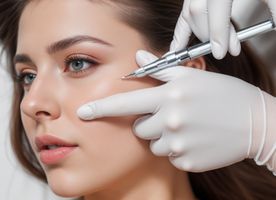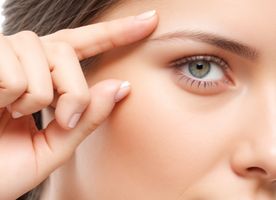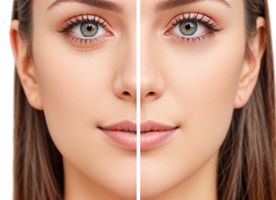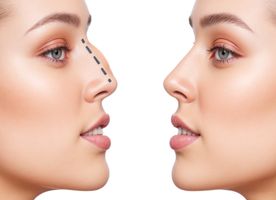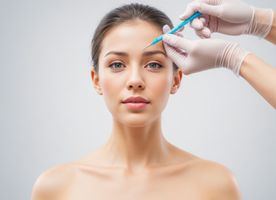Eyelid Surgery in Vietnam
Search and Compare the Best Clinics and Doctors at the Lowest Prices for Eyelid Surgery in Vietnam






Eyelid Surgery at Home Clinic in Ho Chi Minh City, Vietnam





Eyelid Surgery at Natural Aesthetics Plastic Surgery in Ho Chi Minh City, Vietnam





Eyelid Surgery at Dr Nhan Ho Aesthetic and Plastic Surgery in Ho Chi Minh City, Vietnam





Eyelid Surgery at GNG International in Ho Chi Minh City, Vietnam





Eyelid Surgery at Emcas Medical in Ho Chi Minh City, Vietnam
Our partner clinics in are accredited by the following associations



































































































































No Time?
Tell us what you're looking for and we'll reach out to the top clinics all at once
WHY US?



































































































































No Time?
Tell us what you're looking for and we'll reach out to the top clinics all at once
What does a Eyelid Surgery Procedure Involve?
During the operation, it's common for you to receive a local anesthesia injection around the eye, together with a mild sedative to ease your nervousness. If you need both your upper and lower eyelids addressed, the surgeon usually starts with the upper lids. The surgical operation commences with the surgeon cutting incisions following the natural folds of the eyelid.
Subsequently, the surgeon takes out any surplus skin, fat, and muscle tissue prior to stitching the cuts shut. After finishing the task on the upper eyelid, the surgeon shifts to the lower eyelid. The first step here involves making an incision below your lower eyelashes; then unnecessary skin and muscle tissue are eradicated, and the injury is sewn up.
How Long Should I Stay in Vietnam for a Eyelid Surgery Procedure?
If Vietnam is either not your current living destination or if you've voyaged there particularly for the Eyelid Surgery, it becomes necessary to factor in this suggested duration of stay. Doing this grants you ample time to rest and begin the preliminary phase of recovery under the watchful guidance of your healthcare team. This approach ensures the prevention of post-surgery complications. The opportunity to adapt to your new appearance post-operation in a professional and supportive setting also promotes a more relaxed and worry-free recuperation process.
Afterward, during your subsequent appointment generally arranged a few days following the surgery, your doctor in Vietnam will not only take out your stitches but also examine your recovery progress. They will also provide individualized guidance for your aftercare and respond to any of your questions about maintaining the results of your treatment. This holistic strategy is developed to present to you the safest, most efficacious Eyelid Surgery experience in Vietnam.
What's the Recovery Time for Eyelid Surgery Procedures in Vietnam?
Eyelid surgery or blepharoplasty can sound quite serious. But don't worry, most people recover well. Just remember, everyone heals from surgery differently. After the operation, you might have some swelling or bruising around your eyes. This can last for up to two weeks - that's normal, it’s just your body healing.
After about five days, you should be able to get back to your normal routine - things like going to work, exercising, or even lifting heavy stuff. Now, if you're a contact lens wearer, it's a bit different. You need to wait at least two weeks after the surgery before putting them in. The doctor handling your case will give you all the detailed information you need for your recovery. Each person is unique, and so is their recovery journey, so follow your doctor's advice closely.
What About Aftercare of Eyelid Surgery in Vietnam?
After eyelid surgery, you'll receive specific instructions from your surgeon which are really important to follow. Your surgeon will guide you on taking care of the wound and any limitations, for example, not scratching your eyes and keeping away from smoky environments, like those created by cigarettes. This is super important to make sure you heal properly.
Being gentle with your eyelids during this time is key. You may need to carefully clean your eyelids and use prescribed eye drops or creams. This helps keep the area clean and aids your body in the healing process. Also, we can't forget about protection from the sun and wind - two things that can be harsh on your healing eyelids. If you're going outside, remember to wear sunglasses with a good, dark tint. These will shield your eyes and the sensitive skin around them from potential damage.
What's the Success Rate of Eyelid Surgery Procedures in Vietnam?
Eyelid surgery generally has a remarkably high success rate, with most individuals being satisfied with their post-surgery aesthetics. Indeed, for a lucky few, these results may be lifelong. However, like all things in life, it does carry some risks.
Following the procedure, you might experience dryness or discomfort in your eyes. There are also common surgical risks, such as contracting an infection or noticing bleeding. Additionally, there is the possibility of minor scarring, or injury to the muscles surrounding your eyes.
Less frequent complications could include changes in skin pigmentation, temporary blurred vision or even loss of vision, the formation of a blood clot, or the return of sagging eyelids. Moreover, some individuals might have an allergic reaction to the anesthesia used during the surgery. Although these complications are rare, they can occur. As a result, it's crucial to be aware that they could potentially arise.
This information has been accurately sourced and verified by a medical professional for its accuracy, however, we strongly recommend you to consult with your doctor before pursuing medical procedures overseas.
